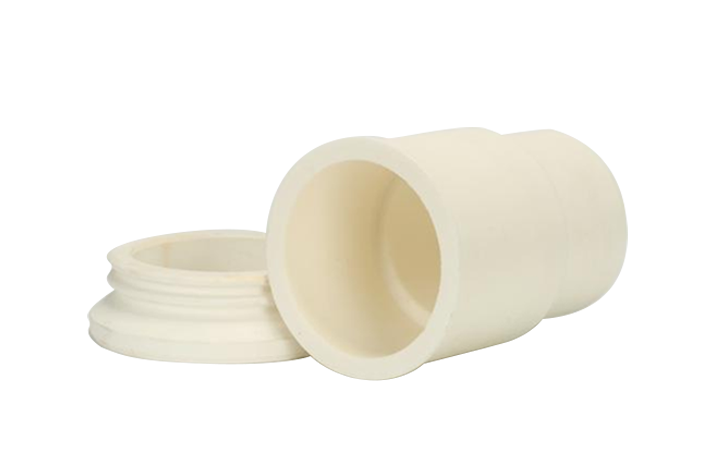
NEWS
A brief introduction to the difference between zirconia ceramics and alumina ceramics
Release time:
2022-04-16
Zirconia ceramics and alumina ceramics, as the "outstanding" among new ceramic materials, have many excellent properties and are widely used, and people often ask what is the difference between zirconia ceramics and alumina ceramics? So what's the difference between the two? Let's briefly introduce it~

Let's first introduce the advantages of both:
1. Compared with the toughness of ceramics, the toughness of zirconia ceramics is 4 times that of alumina ceramics. At the same time, the free fall of zirconia from a height of one meter will only cause some cracks to appear inside the alumina.
2. Density: The density of zirconia ceramics is twice that of alumina ceramics. In contrast, zirconia has better compressive properties.
3. Friction coefficient: The density of zirconia ceramic structural parts is higher than that of alumina ceramics. The density of alumina ceramics is 3.5, and the density of zirconia ceramic structural parts is 6. In actual use, it is more important to consider elasticity and Amount of hard wear. The specific wear resistance of the material depends on the actual use. And the texture is more delicate. After grinding, the surface finish is higher, which can reach more than ▽9. It is mirror-like, extremely smooth, and the friction coefficient is smaller.
On this basis, we optimized the formula and process of zirconia, and obtained zirconia ceramics with fine grain structure, high hardness, high strength and high toughness. High hardness, high strength and high toughness ensure that zirconia ceramics have incomparable wear resistance than other traditional structural ceramics. Ceramics with a fine-grained structure can be processed to obtain very low surface roughness (<0.1um). Therefore, the coefficient of friction of the ceramic surface is reduced, thereby reducing friction and improving the quality of wire drawing (the wire drawn is smooth and burr-free, and is not easy to break).
But alumina ceramics is an alumina ceramic material whose main crystal is α-Al2O3. It is a high-temperature structural ceramic material developed relatively early, and the content of Al2O3 is generally around 75--99.9%. It is usually used to classify according to the content of Al203 in the ingredients. If the content of Al203 is about 75%, it is called 75 alumina ceramics, and if the content of Al203 is about 85%, it is called 85 alumina ceramics, and the content is 95%. If the content is about 99%, let everyone call it 95 alumina ceramics, and if the content is about 99%, let everyone call it 99 alumina ceramics.
In addition, the toughness of the zirconia ceramic structure is also very good, which overcomes the inherent brittleness of the ceramic itself, has higher wear resistance, greatly prolongs the service life of the product, and significantly improves the quality of the paper. Zirconia ceramic structural parts are a newly developed very important structural ceramics, second only to alumina ceramics. Due to some of its good properties (such as its fracture toughness higher than that of alumina ceramics), the structure of zirconia ceramics has attracted more and more attention.
Therefore, the application fields of zirconia ceramics are also very wide, such as: mobile phone 3c electronics field, smart wearable field, optical communication field, jewelry field, automobile field, daily life field and other fields.
Recommend




